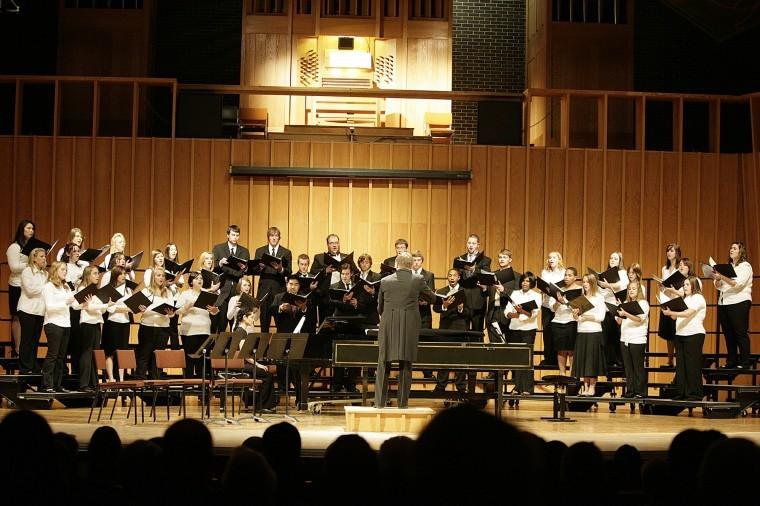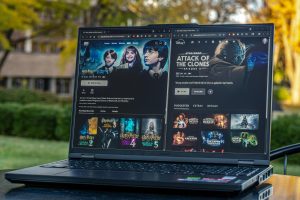School of Music webcasts strike a chord
Northern Star File Photo
The NIU University Choir performs “World Voices” in the Boutell Memorial Concert Hall in this Oct. 15, 2009 file photo.
September 22, 2010
Want to enjoy a live music performance? Want to sit in your underwear while doing so?
For the last year and a half, concerts put on by the NIU School of Music have been streaming throughout the world. Using a service called Ustream — the video-streaming equivalent of YouTube — people can watch the Avalon String Quartet or the NIU Philharmonic live and in high-definition with the click of a button.
Dan Nichols, head of recording services and Internet 2 multimedia specialist, helped pioneer the idea after wanting to use available technology and make it relevant for mainstream audiences.
Nichols started re-purposing a computer system, brought it into several concert halls and got a single robotic camera to broadcast concerts on Ustream. Since then, it’s taken off.
“We’ve been incredibly well-receieved by the School of Music, by parents of School of Music students, by prospective NIU students, by alums, by prospective donors [and] by the academic community,” he said. “We’ve been seen in six continents around the world and [all] 50 states.”
Now the operation is much bigger. At any given performance, there are now two to four robotic cameras being operated from a central room, allowing for close-ups of instruments and performers. Nichols also enlisted the help and support of ITS, Media Services, professor of music Peter Middleton and Paul Bauer, School of Music director.
Bauer said the response has been great so far, chiefly from family members of performers.
“We have students not only from nearby, but from across the state and across the country, and we have international students here,” he said. “It’s especially good for parents of students to be able to watch their students live.”
After each performance, all of the streamed video is uploaded to the School of Music’s YouTube channel. Since it started in January 2009, the channel has uploaded almost 300 videos and has gotten 80,000 views.
Nichols also hopes to make the School of Music more accessible in an interactive sense. He wants to have information flow back and forth, whether it be concerts, lessons, master classes or clinics. To do this, the School is currently partnered with universities in Trinidad and Costa Rica.
Although the convergence of technology is in interesting part of the webcast process, above all, Nichols says the most important thing is the music itself.
“It helps raise the profile of the School of Music,” he said. “It helps bring, essentially, a subculture of academic music and the art form of music back in the mainstream where it’s easily accessible to anyone with an internet connection.”







